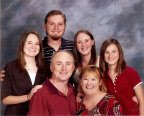Since I was a little girl I have been fascinated with empty, decaying houses. Growing up in the Texas Panhandle, there were buildings of varying size standing out in the middle of the cotton or wheat fields. What happened to cause the owners to leave? Did they get rich and move to a brick house in town? Did the father leave and the mother and kids have to move in with grandparents? Did they leave all their furniture?
I have continued to ask these questions even more forcefully as I've aged and learned the weight of a mortgage and the responsibility of keeping a roof over my family's head. Many of these houses are a product of the dust bowl and the migration from farm life to the urban setting. Fire codes and county building inspectors are making sure there are fewer and fewer of these houses to catch my attention. Before they are entirely gone from the landscape, I'm trying to capture some of them on film. I've paired them with poetry that seems appropriate. My intent has been to use only poetry that the copyright has run out so I'm not stealing. I'm sharing them here on the blog but I eventually hope to find a way to publish the poetry and photos in a coffee table book. Let me know what you think.
Saturday, March 19, 2011
The House With Nobody In It

WHENEVER I walk to Suffern along the Erie track
I go by a poor old farmhouse with its shingles broken and black.
I suppose I've passed it a hundred times, but I always stop for a minute
And look at the house, the tragic house, the house with nobody in it.
I never have seen a haunted house, but I hear there are such things;
That they hold the talk of spirits, their mirth and sorrowings.
I know this house isn't haunted, and I wish it were, I do;
For it wouldn't be so lonely if it had a ghost or two.
This house on the road to Suffern needs a dozen panes of glass,
And somebody ought to weed the walk and take a scythe to the grass.
It needs new paint and shingles, and the vines should be trimmed and tied;
But what it needs the most of all is some people living inside.
If I had a lot of money and all my debts were paid
I'd put a gang of men to work with brush and saw and spade.
I'd buy that place and fix it up the way it used to be
And I'd find some people who wanted a home and give it to them free.
Now, a new house standing empty, with staring window and door,
Looks idle, perhaps, and foolish, like a hat on its block in the store.
But there's nothing mournful about it; it cannot be sad and lone
For the lack of something within it that it has never known.
But a house that has done what a house should do, a house that has sheltered life,
That has put its loving wooden arms around a man and his wife,
A house that has echoed a baby's laugh and held up his stumbling feet,
Is the saddest sight, when it's left alone, that ever your eyes could meet.
So whenever I go to Suffern along the Erie track
I never go by the empty house without stopping and looking back,
Yet it hurts me to look at the crumbling roof and the shutters fallen apart,
For I can't help thinking the poor old house is a house with a broken heart.
Joyce Kilmer (1886-1918)
Gaelic Blessing
The House on the Hill

The House on the Hill
They are all gone away,
The house is shut and still,
There is nothing more to say.
Through broken walls and gray
The winds blow bleak and shrill:
They are all gone away.
Nor is there one today
To speak them good or ill:
There is nothing more to say.
Why is it then we stray
Around the sunken sill?
They are all gone away.
And our poor fancy-play
For them is wasted skill:
There is nothing more to say.
There is ruin and decay
In the House on the Hill
They are all gone away,
There is nothing more to say.
Edwin Arlington Robinson
Subscribe to:
Comments (Atom)


